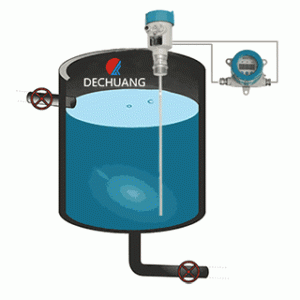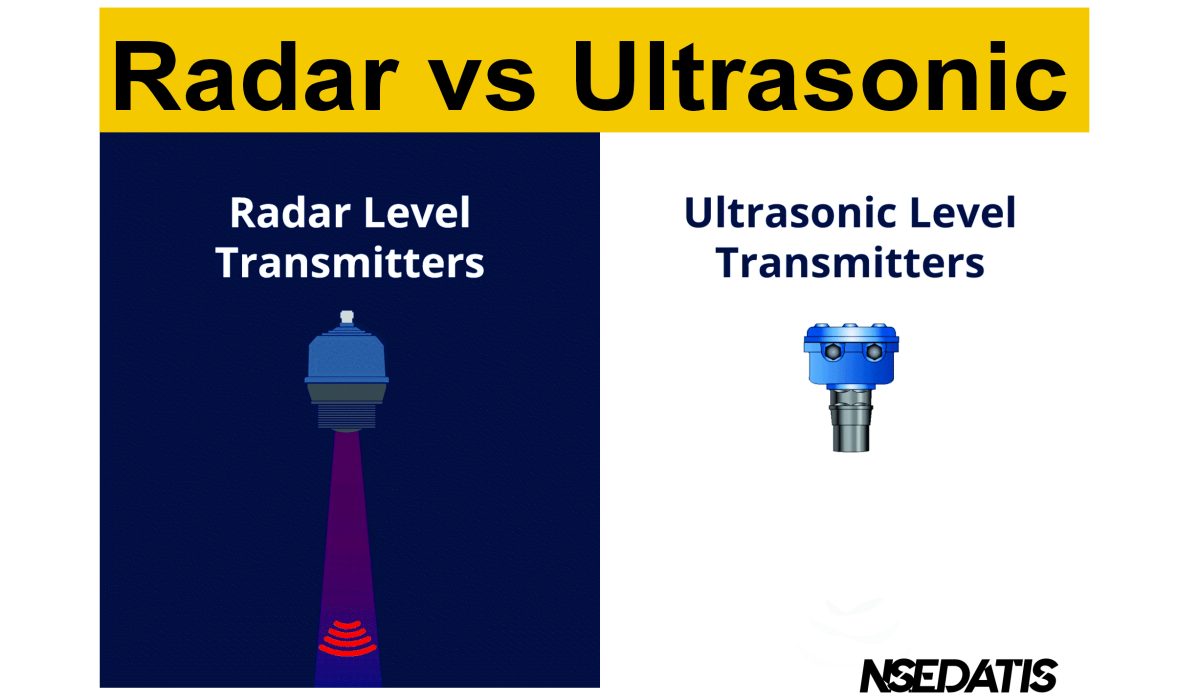Ultrasonic vs. Radar: A Comparative Study of Advanced Level Measurement Techniques
Level measurement is of paramount importance in various industries. Inaccurate measurement can either underestimate or overestimate the height of the product inside a tank, leading to subsequent problems. If the level is underestimated, it can damage equipment. Conversely, if the level is overestimated, it can result in overflow and potential hazards. Therefore, precise level measurement not only ensures accurate performance but also saves time and cost.
Various methods and tools, collectively known as level sensors, are used for level measurement. Ultrasonic and radar techniques are among the most widely used methods. Which method would you choose? Comparing ultrasonic and radar-level sensors can aid in your decision-making.
There are many differences between ultrasonic and radar-level sensors. For instance, the price of these sensors varies significantly. In this article from Datis, we delve deeper into the differences between these two methods to help you select the best option. So, stay with us till the end.
How Ultrasonic Level Measurement Works

In ultrasonic level measurement, ultrasonic waves are emitted towards the product’s surface inside a tank. These waves are reflected to the sensor upon hitting the product surface due to the density difference between the product and the air. The time taken for the waves to travel to the surface and back is directly related to the material level and the distance to the sensor. Thus, measuring this time provides an accurate indication of the material level inside the tank.
The ultrasonic method is one of the most cost-effective and straightforward methods for level measurement. As a non-contact technique, ultrasonic level measurement is used for continuous level monitoring. Some ultrasonic-level sensor models can measure distances up to several meters. This method offers numerous advantages.
Characteristics of the product, such as density, dielectric constant, and moisture content, do not affect its performance. It is easy to install and set up, requiring minimal maintenance. Calibration can be performed without the need to empty and refill the tank. Additionally, ultrasonic level sensors are relatively affordable. However, there are some drawbacks to this method that can be identified through a comparison with other methods.
How Radar Level Measurement Works

Radar level measurement operates similarly to the ultrasonic method, based on the time it takes for a wave to travel to the surface and back. However, instead of ultrasonic waves, radar uses radio waves. These radio waves are part of the electromagnetic spectrum and have a very high frequency. Typically, a radar-level sensor is installed at the topmost height of the tank, and its antenna sends out the radio waves.
A comparison of ultrasonic and radar level sensors shows that radar is also a non-contact method. Factors such as the electrical conductivity and density of the material in the tank do not significantly impact measurement quality. Additionally, dust and noise do not affect the performance of a radar level sensor. Another advantage of this method is its high-temperature tolerance, up to 450 degrees Celsius. However, radar-level sensors are generally more expensive than ultrasonic ones.
Comparing Ultrasonic and Radar Level Sensors

By now, you have a basic understanding of these two-level measurement methods. However, a detailed comparison of ultrasonic and radar level sensors highlights their differences more clearly. These differences can be evaluated from several aspects, including measurement accuracy, cost, installation method, measurement technique, sensor dimensions, and applications. Below, we delve deeper into these differences.
Differences in Measurement Accuracy
One of the main differences between ultrasonic and radar-level sensors is their measurement accuracy. Generally, the ultrasonic method provides good accuracy, but factors such as temperature, humidity, and air density can affect the speed of sound in the air and thus its accuracy. On the other hand, changes in density, acidity, and viscosity do not affect the accuracy of radar-level sensors. Consequently, the radar method offers high accuracy and is less influenced by environmental factors, making it more reliable in various industrial environments. High-accuracy radar level sensors are used for measuring the level in storage tanks.
The measurement range of these two methods also differs. Typically, ultrasonic methods are used for shorter to medium measurement ranges, from a few inches up to about 60 feet (2 meters to 18 meters). However, the radar method is suitable for a wide range of applications and offers greater measurement distances, often exceeding 100 feet (30 meters) and, in some cases, reaching 1000 feet (300 meters) or more.
Differences in Price
Comparing ultrasonic and radar level sensors reveals a difference in cost. Typically, radar-level sensors are more expensive than ultrasonic ones and are better suited for applications requiring higher accuracy and performance. However, ultrasonic level sensors are more budget-friendly. If your applications are less critical and you have budget constraints, the ultrasonic model is a good choice. For more sensitive applications, a radar-level sensor is recommended.
Differences in Installation
The installation methods for ultrasonic and radar-level sensors differ. Ultrasonic level sensors are easier to install and maintain, making them a cost-effective option for installation. However, their transducers might require regular cleaning. On the other hand, installing a radar level sensor is more complex and may require specialized equipment, as this method is known for its durability and low maintenance needs. Consequently, installing a radar-level sensor may incur higher costs and require professional assistance.
Differences in Measurement Method
The ultrasonic method uses sound waves, typically in the ultrasonic frequency range (above the human hearing range), to measure the distance from the sensor to the liquid or solid surface. This method emits a high-frequency pulse and measures the time it takes for the pulse to return after hitting the surface. The time delay is then converted into a level measurement.
Radar level sensors use electromagnetic waves, usually in the radio frequency range, to measure the distance to the liquid or solid surface. The device sends out electromagnetic pulses and calculates the time it takes for these pulses to reflect from the surface. This time delay is used to determine the level.
Differences in Sensor Dimensions
Ultrasonic and radar level sensors differ in terms of sensor dimensions. The sensor dimensions refer to the physical size of the device or sensor. Typically, ultrasonic level sensors are smaller in size compared to radar sensors. This makes them suitable for installation in confined spaces or areas with obstacles. Additionally, ultrasonic-level sensors are often lighter, making them easier to install and move.
Radar sensors, on the other hand, are larger than ultrasonic sensors, requiring more space for installation. They are also heavier, which can impact their application. In locations where space is limited or installation is challenging, the smaller size and lighter weight of ultrasonic sensors might be more suitable. For smaller tanks or environments, the compact size of ultrasonic sensors can influence their selection. When installation at high elevations is necessary, the weight of radar sensors may become a significant factor.
Differences in Application
Both ultrasonic and radar level sensors are used to measure the level of material in a tank, but they operate based on different principles and have distinct features. Radar technology is increasingly seen as the optimal approach for level measurement. However, this method isn’t always suitable for every application. Despite significant advances in performance, accuracy, and cost-effectiveness of radar sensors, they can’t be used universally. In certain specific applications, the ultrasonic method is also useful.
The applications of the two methods differ as well. The ultrasonic method is an excellent choice for measuring both solid and liquid levels. On the other hand, common applications of the radar method include the mining, oil and gas, asphalt mixing tanks, pharmaceutical, pulp and paper industries, and more. Considering these factors, it can be said that the ultrasonic method has more limited applications, whereas the radar method is used for most industrial applications.
Conclusion
This article compares ultrasonic and radar level sensors to help you choose the best device for level measurement in your industry. Both ultrasonic and radar sensors are effective for measuring levels, but their choice depends on several factors such as measurement range, application conditions, accuracy, and installation complexity. Radar-level sensors are typically favored for demanding industrial environments due to their high accuracy and reliability. On the other hand, ultrasonic level sensors are ideal for simpler applications with shorter measurement ranges, offering a cost-effective and straightforward solution.

